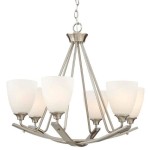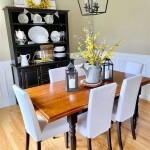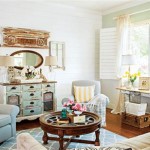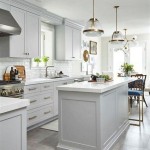Why You Never Decorate A Palm Tree
Palm trees, iconic symbols of tropical climates, possess a unique and delicate biology that makes them particularly susceptible to damage from artificial decorations. While the aesthetic appeal of adorning these trees with lights, ornaments, or other embellishments is undeniable, the long-term consequences for the tree's health and structural integrity are significant. This article will explore the various reasons why decorating palm trees is strongly discouraged, focusing on the potential for physical harm, disease introduction, and the disruption of natural processes.
Physical Damage to the Tree's Structure
The structure of a palm tree differs considerably from that of deciduous trees. Unlike trees with bark that provides a protective layer, palm trunks are typically composed of tightly packed vascular bundles embedded within a fibrous matrix. This structure lacks a true cambium layer, the actively growing tissue responsible for bark formation and wound repair in other trees. Any physical damage to the palm trunk, such as cuts, punctures, or abrasions caused by wiring, nails, or the weight of decorations, creates entry points for pathogens and can impede the tree's ability to transport water and nutrients.
Fasteners used to secure decorations, such as screws, nails, or staples, directly penetrate the living tissue of the trunk. This penetration not only causes immediate localized damage but also leaves permanent holes that can weaken the structural integrity of the palm. Over time, these holes can expand due to weathering and pest infestation, creating cavities that compromise the tree's ability to withstand wind and other environmental stresses. The cumulative effect of multiple penetrations can be especially detrimental, particularly in older or less robust palms.
Even seemingly innocuous methods of attachment, such as wrapping string or ribbon around the trunk, can cause problems. The constriction created by tightly wrapped materials can restrict the flow of water and nutrients, leading to localized dieback above the constriction point. This is particularly problematic in younger palms with thinner trunks, where even slight pressure can have a significant impact on the tree's vascular system.
Furthermore, the weight of heavier decorations can place undue stress on the palm's fronds. While palm fronds are designed to be flexible and resilient, they can still be damaged by excessive weight, especially during windy conditions. Broken or damaged fronds not only detract from the tree's aesthetic appeal but also reduce its ability to photosynthesize, impacting its overall health and vigor.
Introduction and Propagation of Diseases
Palm trees are susceptible to a variety of fungal and bacterial diseases, many of which can be introduced or exacerbated by decorating practices. Open wounds created by attaching decorations provide ideal entry points for these pathogens, allowing them to colonize the tree's tissues and cause significant damage. Diseases like Fusarium wilt, Ganoderma butt rot, and lethal yellowing can be particularly devastating to palms, often leading to their eventual death.
The tools used to install decorations, such as pruning shears, ladders, and drills, can also serve as vectors for disease transmission. If these tools are not properly sterilized between uses, they can carry pathogens from one palm tree to another, spreading diseases throughout a landscape or community. This is especially concerning when working with multiple palm species, as some diseases may be more virulent in certain species than others.
Moreover, the decorations themselves can harbor pathogens. Artificial decorations, such as plastic ornaments or tinsel, can accumulate moisture and debris, creating a conducive environment for fungal and bacterial growth. When these decorations come into contact with the palm tree's surface, the pathogens can transfer to the tree and initiate an infection. Natural decorations, such as pine cones or berries, can also carry diseases or pests that can harm the palm tree.
The stress caused by decorating practices can further weaken the palm's immune system, making it more susceptible to disease. When a palm tree is subjected to physical damage, nutrient deficiencies, or other stressors, it becomes less able to defend itself against pathogens. This weakened state increases the likelihood of infection and can accelerate the progression of existing diseases.
Disruption of Natural Processes and Wildlife Habitat
Decorating palm trees can disrupt their natural growth patterns and interfere with their ability to adapt to environmental conditions. Palm trees require sunlight, air circulation, and access to water and nutrients to thrive. Decorations that block sunlight, restrict airflow, or interfere with water absorption can negatively impact the tree's health and vigor. For example, draping lights over the fronds can reduce the amount of sunlight that reaches the photosynthetic tissues, leading to a decline in energy production.
The presence of artificial decorations can also disrupt the natural movement of air around the palm tree, creating pockets of stagnant air that promote fungal growth. This is particularly problematic in humid climates, where high humidity levels already contribute to the development of fungal diseases. Furthermore, decorations can trap debris and moisture, creating a breeding ground for pests and diseases.
Palm trees provide valuable habitat for a variety of wildlife, including birds, insects, and small mammals. Decorations can disrupt these natural habitats, displacing wildlife and altering their behavior. For example, lights strung on palm trees can disorient nocturnal animals, interfering with their feeding and mating patterns. The presence of artificial decorations can also deter birds from nesting in the palm trees, reducing the availability of nesting sites and potentially impacting bird populations.
The use of certain decorating materials, such as plastic and tinsel, can also contribute to environmental pollution. These materials can break down over time, releasing microplastics into the environment that can harm wildlife and contaminate soil and water resources. Furthermore, the disposal of damaged or unwanted decorations can contribute to landfill waste, exacerbating environmental problems.
Finally, the aesthetic value of palm trees lies in their natural beauty. Overloading them with artificial decorations detracts from this intrinsic appeal. It diminishes the natural tropical ambience they provide and can give an appearance of artificiality and degradation. Preserving the health and unaltered state of these trees ensures that they continue to contribute to the visual appeal of landscapes for years to come.
Here S Why You Shouldn T Put Lights On Palm Trees Hilton Head Island Packet

Why You Shouldn T Decorate Palm Trees In Xmas Lights Tree

Italian Town Discovers Why You Should Never Put Light On A Palm Tree The Sun

How To String Lights On Palm Trees Ehow

Wrapping Palm Trees With Lights Phoenix Trim A Tree

How To Light Palm Trees Hunker

Lights On Palm Trees Is It Safe Family Handyman

Vibes In Santa Barbara

Simple Palm Tree Tutorial

Simple Palm Tree Tutorial
Related Posts







